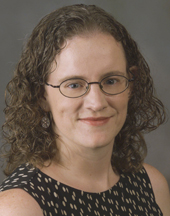Mach 30 is currently building Ground Sphere. This is a ground station that will allow us (and you!) the ability to listen to satellites cheaply and easily. We’ve been working on Ground Sphere for some years, starting in 2013. Below is an abbreviated history of the project, although more details are available at Ground Sphere’s History Page on Open Design Engine.

What is a ground station?
Ground stations are basically radio stations, except that they let people communicate with satellites by sending and receiving radio signals to and from Space. Sending signals requires a license, so Ground Sphere is designed to only receive signals from Space. Mach 30 is in the process of creating Ground Sphere MK3. It is an open-source ground station project, documented on our Open Design Engine. Ground Sphere’s ultimate goal is to allow those that use it to listen to the International Space Station as it travels above the Earth.
What kind of signals can you receive with Ground Sphere?
The various incarnations of Ground Sphere have had several capabilities, from listening to a specific satellite, to receiving Ham radio signals. There’s a wide range of frequencies that the Ground Sphere design can be tuned to, and we’re asking anyone interested to help us determine the best frequency to tune it to. You can tell us your thoughts in our minute long survey.
The history of Ground Sphere:
- MK1 was our proof of concept. Its mission was to receive signals from Ham Radio Satellites, and when it made its on-screen appearance at Yuri’s Night in 2013 in Colorado, it was able to receive signals from as far away as California and Tennessee.
- MK2 was the companion to SkyCube , and its mission was to receive “Tweets” from SkyCube, a Kickstarter CubeSat project from Southern Stars. Unfortunately, SkyCube had gotten essentially lost in space.
Current Ground Sphere MK3 development
- First, we wanted to review other maker ground stations, such as the SDR software evaluation based on “listening to satellites for $30”. This software’s goal was to listen to signals, and allow them to be recorded. Unfortunately, we found that this article did not entirely allow for the reader to listen to the ISS for $30.
- Next, we want to make sure that the math of satellite communications from the ground is well documented, which we’ve started in a video by Mach 30 volunteer Aaron Harper. You can see that video below. Needless to say, there is a LOT of math here. It is important that our math be checked, and documented, so that others are able to recreate our findings and research.
- Beyond the basics of construction and documentation, we want to see what people might be most interested in using Ground Sphere for, and that means researching other possible uses. Examples include downloading images from weather satellites, but there might be more; tell us if you’ve got one in mind!
- Step four is to build the new prototype for a to-be-determined frequency. It could be weather satellites, Ham radio satellites, or something else entirely.
As Ground Sphere progresses, we will update our readers about how we’re able to grow and use the project.
Remember, you can be a part of projects like Ground Sphere by joining our weekly IPT Standup meetings, held on Google hangouts. You can join us on Tuesday evenings at 8:30pm Eastern Time by clicking here. We are always interested in meeting people who are interested in being a part of our mission to help all of Humanity reach Outer Space. To find out more about how you can become a Mach 30 Catalyst, please click here.
You can also follow GroundSphere on Twitter at http://www.twitter.com/ground_sphere.
What would you be interested in using Ground Sphere for? Let us know in the comments!












